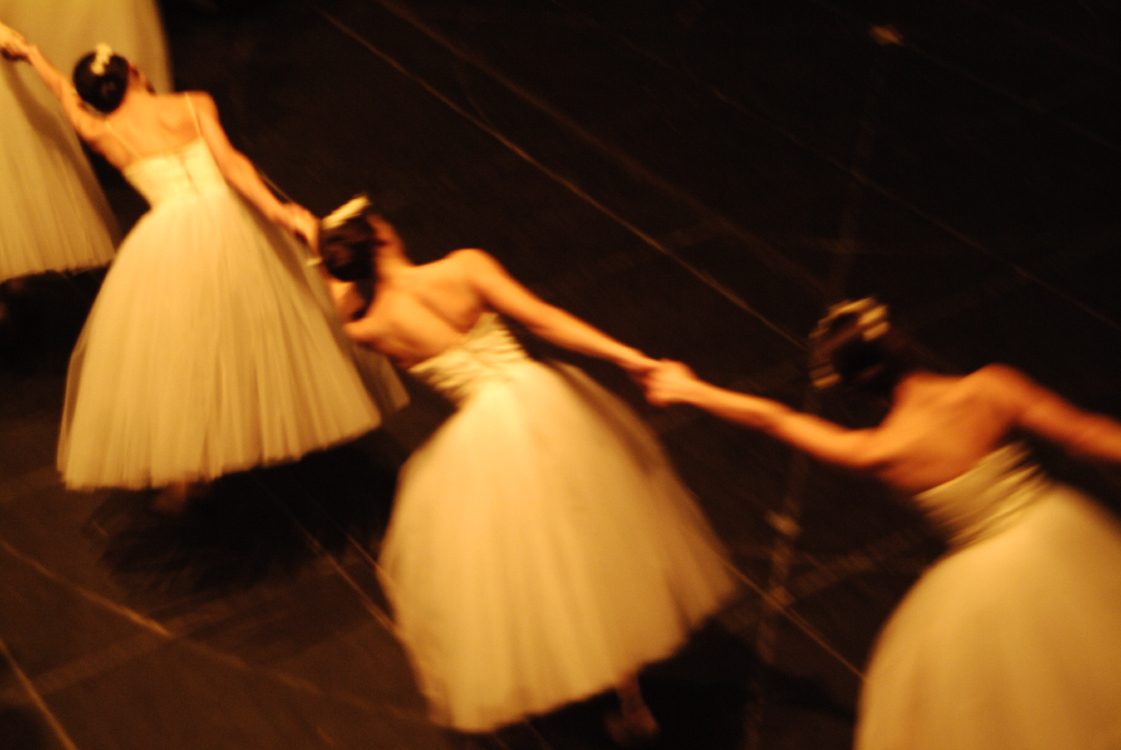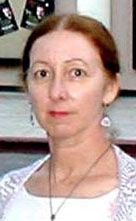 Dance~The Jewish
C~o~n~n~e~c~t~i~o~n Dance~The Jewish
C~o~n~n~e~c~t~i~o~nby Sheila Orysiek |
 |
SAN DIEGO—If there is any hope left for peace between the various countries and ideologies of the Middle East, that hope most probably resides in the arts and the artists who want a peaceful world in which to work and create.
John Malashock, choreographer, former dancer, and Artistic Director of Malashock Dance, has been an important member of the dance community in San Diego for nineteen years. He received his BA in dance in 1975, danced with numerous companies around the world but most especially with the prestigious modern/contemporary Twyla Tharp Company appearing in The Catherine Wheel, Dance in America, Twyla Tharp Scrapbook as well as the film Amadeus. He is the recipient of four Emmy’s along with numerous other awards.
In addition to teaching at his school, he has taught workshops with the Tharp Company, major universities in the United States and the American Dance Festival in Tokyo, Japan. He is recognized as a fellow of the Los Angeles/Israel Center for Jewish Culture and Creativity.
When Malashock met Iranian born composer, Shahrokh Yadegari, the two recognized a kindred desire to explore and blend their artistic visions as well as their shared Jewish heritage in the hope of peace. It occurred to them that it would be possible to approach that dream by going back to a history before the germs of the present conflict arose.
Yadegari is collaborating with Malashock beyond composing the music. He is also helping to develop the concept and cultural content. He has a BS (Electrical Engineering), a Master’s in Media Arts and Sciences (MIT) and a Ph.D in music from UCSD. He was artistic director of the Persian Arts Society, and is a member of the Department of Theatre and Dance at UCSD. His music has been played around the world.
Malashock explains that conflicts and bonds occur on various levels, from differences between members of a family, to escalating into a national cultural divide. But differences can also blend into harmony without necessarily erupting into dissension. Exploring those differences and those harmonies – the ability or inability, for opposites to co-exist, is something that excites Malashock’s imagination. He describes Yadegari’s music as both ancient and contemporary at the same time – another exploration of opposites.
The title Stay the Hand comes from the Biblical story of Abraham “staying his hand” when G-D saw that he did indeed intend to sacrifice his son, Isaac. This is a story in which all three Abrahamic faiths believe and an endeavor to find some common ground is a good place to begin a search for understanding.
Malashock says that Stay the Hand is not about religion or politics, but about seeing if opposites can co-exist. It is possible that two things can be so opposed that they meet together on the far side.
I attended the third of three evenings in which the first five parts of this choreographic work-in-progress were presented. It took place at the truly wonderful new studio in the dance complex: Dance Place San Diego at NTC Promenade. This is the completely refurbished result of a closed military base becoming part of the City of San Diego. Chairs were set around the studio (and it did my heart good to be in a studio again) and proximity to the dancers lent an immediacy to reaction and reflection.
Between the sections choreographed to date, Malashock introduced the dancers as well as the composer (who was also present) and offered insights into the concepts he envisions and realizes through movement. He mentioned that it was hard not to go into religion because it is so pervasive to the history, but when he did, it was to find commonality, not differences. The work as a whole emphasized various connections between Persian and Jewish history – from earliest history such as the Purim story of King Xerses and Queen Vashti found in Jewish literature.
The music is quite modern
but still has the haunting quality of Middle Eastern sound, antique but also
eternal. The vocalizations, both male and female, aided and abetted this
duality of new-old. I am not generally a fan of modern music, but I did both
enjoy the music for itself as well as how it was married to the dance.
Seven dancers participated in various groupings, sometimes the space between the
groupings caused split vision by the observer and one wonders if this will
distract the viewer – or will the effect be to make the viewer choose. However,
it is much too early to come to any conclusion or opinion regarding
construction. The work, though well rehearsed, well conceived and well danced,
is still very much “in progress.”
Malashock takes great care with choreographing hands, heads and eyes and the dancers showed this care emphatically. He says he uses hands purposefully not simply for shape or adornment. I love dance that cares for details. Weight was used for emphasis, but as well as pulled off center – caught and released. It was also used percussively, as a drumbeat, echoing the music.
The groupings and twosomes fairly well mixed up gender expectations, men lifting women, but also women lifting men and women lifting other women. Most often, however, the two men partnered one another rather than the usual man/woman combination. When I mentioned this to Malashock, he said that this represented the two sides of the same – a mirror image duality.
The fifth section presents the death of Abraham and the rapprochement of his sons, Isaac and Ishmael, at his funeral. I was most taken with the scene of Abraham lying in death with three women half kneeling around him – as if they were guardian angels. It reminded me of the golden statues found guarding the sarcophagus in the tomb of Tutankhamen.
Malashock also explained that he brings to this the Zoroastrian concepts of good/evil, heaven/hell and darkness/light. He likes the tension inherent in those ideas.
The final section was filled with both visible energy as well as conceptual energy; whirling bodies – circles opening and closing; resolving into an exploration of individual form and space and finally cooperative form and space.
Malashock emphasized that this is project is still very much in flux, open to change of movement, concept, construct and performers. Premiere is expected spring of 2008. It will be fascinating to return and see what grew from this most auspicious beginning.
Dancers: Michael Mizerany, Greg Lane, Christine Marshall, Erica Nordin, Lara Segura, Erica Buechner, Marcos Duran.